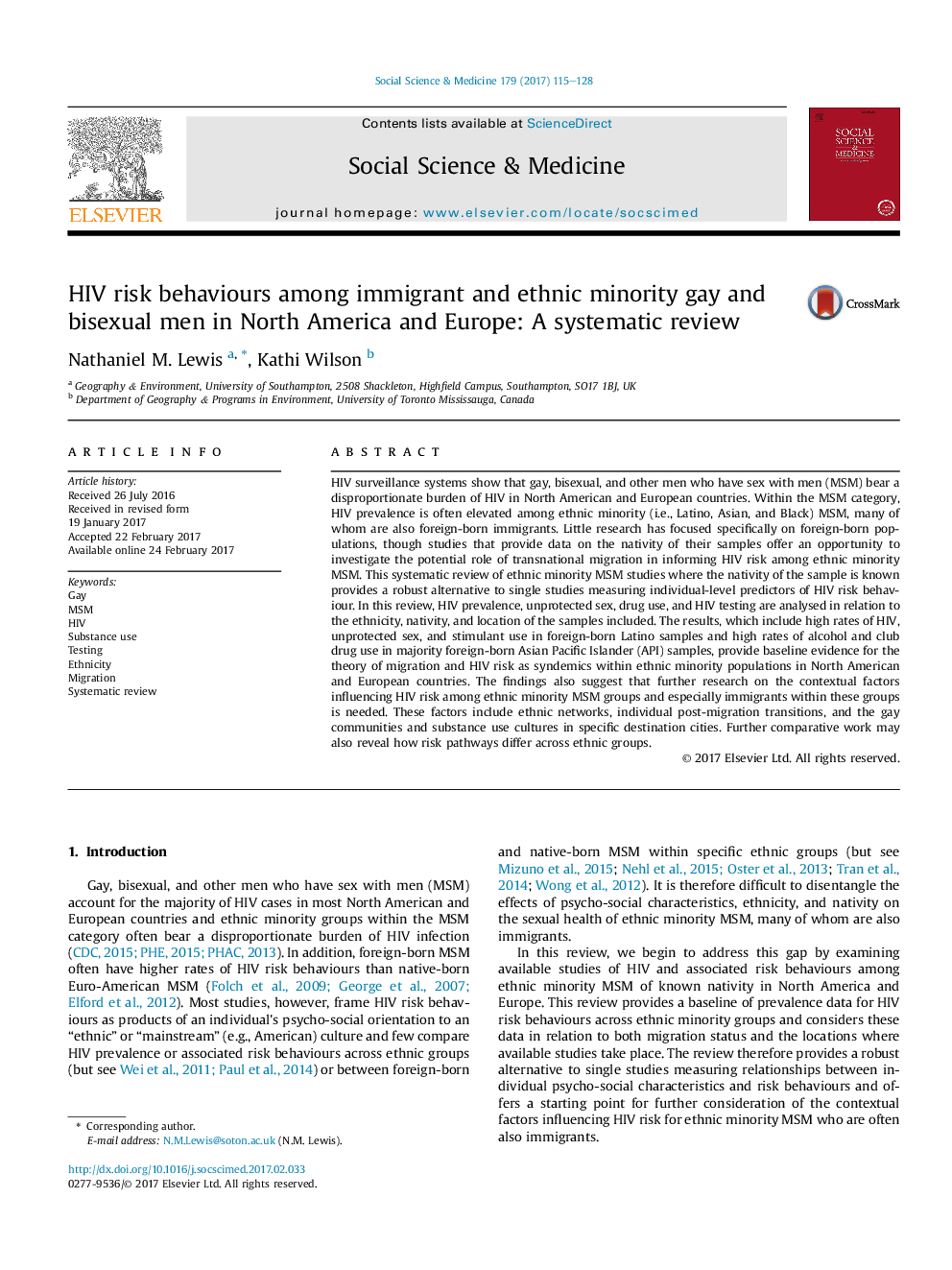| Article ID | Journal | Published Year | Pages | File Type |
|---|---|---|---|---|
| 5046630 | Social Science & Medicine | 2017 | 14 Pages |
â¢Advances a theory of transnational migration and HIV risk among MSM as syndemic.â¢Establishes baseline prevalence data for HIV risk factors among ethnic minority MSM.â¢Provides a point of departure for inter-ethnic comparison of HIV risk factors for MSM.
HIV surveillance systems show that gay, bisexual, and other men who have sex with men (MSM) bear a disproportionate burden of HIV in North American and European countries. Within the MSM category, HIV prevalence is often elevated among ethnic minority (i.e., Latino, Asian, and Black) MSM, many of whom are also foreign-born immigrants. Little research has focused specifically on foreign-born populations, though studies that provide data on the nativity of their samples offer an opportunity to investigate the potential role of transnational migration in informing HIV risk among ethnic minority MSM. This systematic review of ethnic minority MSM studies where the nativity of the sample is known provides a robust alternative to single studies measuring individual-level predictors of HIV risk behaviour. In this review, HIV prevalence, unprotected sex, drug use, and HIV testing are analysed in relation to the ethnicity, nativity, and location of the samples included. The results, which include high rates of HIV, unprotected sex, and stimulant use in foreign-born Latino samples and high rates of alcohol and club drug use in majority foreign-born Asian Pacific Islander (API) samples, provide baseline evidence for the theory of migration and HIV risk as syndemics within ethnic minority populations in North American and European countries. The findings also suggest that further research on the contextual factors influencing HIV risk among ethnic minority MSM groups and especially immigrants within these groups is needed. These factors include ethnic networks, individual post-migration transitions, and the gay communities and substance use cultures in specific destination cities. Further comparative work may also reveal how risk pathways differ across ethnic groups.
